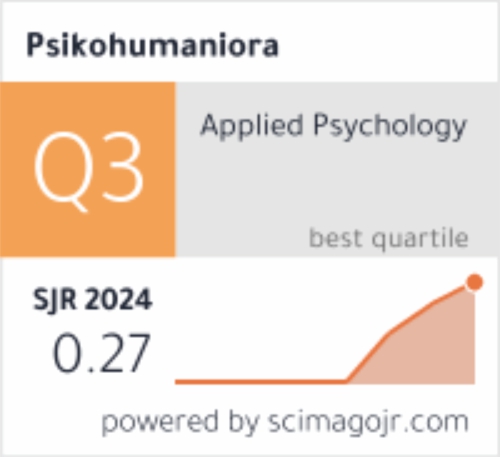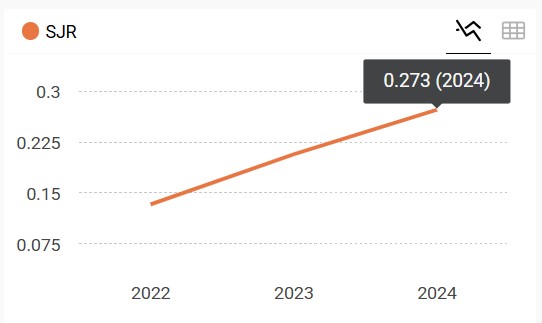Future time perspective and turnover intention: The mediating role of resilience
DOI:
https://doi.org/10.21580/pjpp.v4i1.3120Keywords:
future time perspective, resilience, turnover intention, Zimbardo Time Perspective InventoryAbstract
The intention of employees to leave the organization, or known as turnover intention, is something that must be taken seriously by an organization as it may affect the sustainability of the organization. This study aimed to determine the effect of resilience as a mediator in the relationship between future time perspective (FTP) and turnover intention. Data were taken using convenience sampling from various state-owned enterprises (Badan Usaha Milik Negara, BUMN) in Depok and Jakarta area (N = 310). The study used a self-rating method using 3 measurements, namely Zimbardo Time Perspective Inventory, Brief Resilience Scale, and Turnover Intention. Data were analyzed using mediation technique by Hayes’ PROCESS macro on SPSS program. The results showed that FTP negatively and significantly affected turnover intention and that resilience fully mediated the relationship. As a practical implication, this study provides information for organizations to employ programs to increase employees’ future time perspective and resilience.Downloads
References
American Psychological Association. (2017). The road to resilience.
Avey, J. B., Luthans, F., & Jensen, S. M. (2009). Psychological capital: A positive resource for combating employee stress and turnover. Human Resource Management, 48(5), 677–693. https://doi.org/10.1002/hrm.20294
Bande, B., Fernández-Ferrín, P., Varela, J. A., & Jaramillo, F. (2014). Emotions and salesperson propensity to leave: The effects of emotional intelligence and resilience. Industrial Marketing Management. https://doi.org/10.1016/j.indmarman.2014.10.011
Bolotova, A. K., & Hachaturova, M. R. (2013). The role of time perspective in coping behavior. Psychology in Russia: State of the Art, 6(3), 120–131. https://doi.org/10.11621/pir.2013.0311
Bukhori, B., Hassan, Z., Hadjar, I., & Hidayah, R. (2017). The effect of sprituality and social support from the family toward final semester university students’ resilience. Man in India, 97(19), 313–321.
Deery, S. J., Iverson, R. D., & Walsh, J. T. (2010). Coping strategies in call centres: Work intensity and the role of co‐workers and supervisors. British Journal of Industrial Relations, 48(1), 181–200. https://doi.org/10.1111/j.1467-8543.2009.00755.x
Dilara Emiroğlu, B., Akova, O., & Tanrıverdi, H. (2015). The relationship between turnover intention and demographic factors in hotel businesses: A study at five star hotels in Istanbul. In Procedia - Social and Behavioral Sciences (Vol. 207, pp. 385–397). https://doi.org/10.1016/j.sbspro.2015.10.108
Ferrari, L., Nota, L., & Soresi, S. (2012). Evaluation of an intervention to foster time perspective and career decidedness in a group of Italian adolescents. The Career Development Quarterly, 60(1), 82–96. https://doi.org/10.1002/j.2161-0045.2012.00007.x
Field, A. P. (2013). Discovering statistics using IBM SPSS statistics. SAGE.
Grant, A. M., Curtayne, L., & Burton, G. (2009). Executive coaching enhances goal attainment, resilience and workplace well-being: A randomised controlled study. The Journal of Positive Psychology, 4(5), 396–407. https://doi.org/10.1080/17439760902992456
Hobfoll, S. F. (1989). Conservation of resources: A new attempt at conceptualizing stress. American Psychologist, 44(3), 513–524. https://doi.org/10.1037/0003-066X.44.3.513
Izzaturrohmah, & Khaerani, N. M. (2018). Peningkatan resiliensi perempuan korban pelecehan seksual melalui pelatihan regulasi emosi. Psikohumaniora: Jurnal Penelitian Psikologi, 3(1), 117–140. https://dx.doi.org/10.21580/pjpp.v3i1.2527
Joo, B.-K., & Park, S. (2014). Career satisfaction, organizational commitment, and turnover intention: The effects of goal orientation, organizational learning culture and developmental feedback. Leadership & Organization Development Journal, 3, 482–500. https://doi.org/10.1108/01437731011069999
Kaur, B., Mohindru, & Pankaj, D. (2013). Antecedents of turnover intentions: A literature review. Global Journal of Management and Business Studies, 3(10), 1219–1230. Retrieved from https://www.ripublication.com/gjmbs_spl/gjmbsv3n10_26.pdf
Marko, K. W., & Savickas, M. L. (1998). Effectiveness of a career time perspective intervention. Journal of Vocational Behavior, 52(1), 106–119. https://doi.org/10.1006/jvbe.1996.1566
Michael Page Consulting. (2015). 2015 Employee Intentions Report - Indonesia. Retrieved from https://www.michaelpage.co.id/
Mischel, W., & Shoda, Y. (1995). A cognitive-affective system theory of personality: Reconceptualizing situations, dispositions, dynamics, and invariance in personality structure. Psychological Review, 102(2), 246–268.
Mobley, W. H., Horner, S. O., & Hollingsworth, A. T. (1978). An evaluation of precursors of hospital employee turnover. Journal of Applied Psychology, 63(4), 408–414. https://doi.org/10.1037/0021-9010.63.4.408
Nadiri, H., & Tanova, C. (2010). An investigation of the role of justice in turnover intentions, job satisfaction, and organizational citizenship behavior in hospitality industry. International Journal of Hospitality Management, 29(1), 33–41. https://doi.org/10.1016/J.IJHM.2009.05.001
Ncede, N. (2013). Factors contributing to employee turnover intention at a selected company in the Cape Town clothing industry. Cape Peninsula University of Technology.
Park, I. J., & Jung, H. (2015). Relationships among future time perspective, career and organizational commitment, occupational self-efficacy, and turnover intention. Social Behavior and Personality: An International Journal, 43(9), 1547–1561. https://doi.org/10.2224/sbp.2015.43.9.1547
Podsakoff, P. M., MacKenzie, S. B., Lee, J.-Y., & Podsakoff, N. P. (2003). Common method biases in behavioral research: A critical review of the literature and recommended remedies. Journal of Applied Psychology, 88(5), 879–903. https://doi.org/10.1037/0021-9010.88.5.879
Sims, R. L., Ruppel, C. P., & Zeidler, P. (2016). Work strain, job satisfaction, and intention to quit: The moderating effect of long-term orientation. International Journal of Stress Management, 23(1), 23–43. https://doi.org/10.1037/a0039755
Smith, B. W., Dalen, J., Wiggins, K., Tooley, E., Christopher, P., & Bernard, J. (2008). The Brief Resilience Scale: Assessing the ability to bounce Back. International Journal of Behavioral Medicine, 15, 194–200. https://doi.org/10.1080/10705500802222972
Takahashi, K., Shimane, M., Ono, Y., & Hattori, Y. (2013). Testing the Zimbardo Time Perspective Inventory: Japanese validation study. In M. P. Paixão, J. T. Da Silva, V. Ortuño, & P. Cordeiro (Eds.), International Studies in Time Perspective (pp. 233–240). Imprensa da Universidade de Coimbra. https://doi.org/10.14195/978-989-26-0775-7_25
Tett, R. P., & Meyer, J. P. (2006). Job satisfaction, organizational commitment, turnover intention, and turnover: Path analyses based on meta-analytic findings. Personnel Psychology, 46(2), 259–293. https://doi.org/10.1111/j.1744-6570.1993.tb00874.x
The Australian Psychological Society. (2011). Illuminations: Special edition on resilience in organisation.
Yu, M., & Lee, H. (2018). Impact of resilience and job involvement on turnover intention of new graduate nurses using structural equation modeling. Japan Journal of Nursing Science, 15(4), 351–362. https://doi.org/10.1111/jjns.12210
Zimbardo, P. G., & Boyd, J. N. (2015). Putting time in perspective: A valid, reliable individual-differences metric. Time Perspective Theory; Review, Research and Application: Essays in Honor of Philip G. Zimbardo. https://doi.org/10.1007/978-3-319-07368-2_2
Zopiatis, A., Constanti, P., & Theocharous, A. L. (2014). Job involvement, commitment, satisfaction and turnover: Evidence from hotel employees in Cyprus. Tourism Management, 41, 129–140. https://doi.org/10.1016/J.TOURMAN.2013.09.013
Downloads
Published
How to Cite
Issue
Section
License
The copyright of the accepted article shall be assigned to the publisher of the journal. The intended copyright includes the right to publish the article in various forms (including reprints). The journal maintains the publishing rights to published articles.
In line with the license, authors and any users (readers and other researchers) are allowed to share and adapt the material only for non-commercial purposes. In addition, the material must be given appropriate credit, provided with a link to the license, and indicated if changes were made. If authors remix, transform, or build upon the material, authors must distribute their contributions under the same license as the original.



